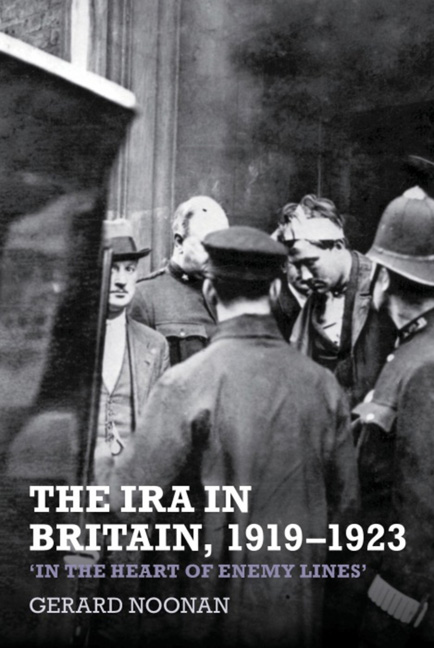Book contents
- Frontmatter
- Contents
- List of Illustrations
- List of Tables
- List of Graphs
- List of Abbreviations
- Acknowledgements
- Introduction
- Prologue
- 1 ‘On a Solid Footing’: Organizing Republicanism in Britain, January 1919–July 1921
- 2 Supplying an Army: Gunrunning in Britain, January 1919–July 1921
- 3 ‘We are doing what you are doing in Ireland’: IRA Operations in Britain, January 1919–July 1921
- 4 Truce, Treaty and Dissension, July 1921–June 1922
- 5 The Civil War, June 1922–May 1923
- 6 Combating the ‘Sinn Fein Movement’ in Britain: The Response of the Authorities, 1919–1923
- Epilogue and Conclusion
- Select Bibliography
- Index
6 - Combating the ‘Sinn Fein Movement’ in Britain: The Response of the Authorities, 1919–1923
- Frontmatter
- Contents
- List of Illustrations
- List of Tables
- List of Graphs
- List of Abbreviations
- Acknowledgements
- Introduction
- Prologue
- 1 ‘On a Solid Footing’: Organizing Republicanism in Britain, January 1919–July 1921
- 2 Supplying an Army: Gunrunning in Britain, January 1919–July 1921
- 3 ‘We are doing what you are doing in Ireland’: IRA Operations in Britain, January 1919–July 1921
- 4 Truce, Treaty and Dissension, July 1921–June 1922
- 5 The Civil War, June 1922–May 1923
- 6 Combating the ‘Sinn Fein Movement’ in Britain: The Response of the Authorities, 1919–1923
- Epilogue and Conclusion
- Select Bibliography
- Index
Summary
I
‘We have murder by the throat’, Lloyd George declared in early November 1920, promising the imminent defeat of the Volunteers in Ireland. By the end of the month, however, Crown forces there had suffered a number of deadly attacks and the IRA had extended its campaign of violence to Britain itself. ‘The Sinn Fein movement, in its Irish Republican Army stage, is spreading to this country [i.e. England]’, Sir Hamar Greenwood was forced to warn the House of Commons. ‘It has its own areas, its own commandants, its own soldiers in this country.’ This chapter studies the reaction of the authorities to the threat posed by Irish republicanism in Britain. Section II discusses the political situation in post-war Britain and the British Empire, the context which coloured the government's view of the republican movement. Sections III and IV examine the means by which politicians and the police attempted to thwart IRA gunrunning and violence, noting the similarities and differences between these and the instruments used in wrestling with the Fenians in the 1860s and 1880s. Sections V and VI focus on republicans’ experiences of the criminal justice system in Britain, namely the courts and the prisons. Section VII discusses the authorities’ approach during the post-treaty and civil war periods. Section VIII concludes.
II
Britain emerged from the First World War as a victor. Its main rival for worldwide naval supremacy, Germany, was defeated. Moreover, as a result of the Paris Peace Conference, the British Empire expanded in Africa and the Middle East. Yet, the war also unleashed powerful forces of disorder. The period 1919–22 saw a ‘crisis of empire’ as rebellions of varying intensity broke out in Afghanistan, Egypt, India and Iraq, as well as in Ireland. Nationalism was the main force in these rebellions. Some members of the British establishment, however, discerned the involvement of a more sinister force, that of communism.
In the revolution of October 1917, the Bolsheviks under Lenin overthrew the Provisional Government and declared Russia the world's first communist state. Hoping for the outbreak of similar revolutions in other parts of Europe, the Russians quickly established the Communist International (Comintern) as a vehicle to foster such revolts.
- Type
- Chapter
- Information
- The IRA in Britain, 1919–1923‘In the Heart of Enemy Lines’, pp. 263 - 319Publisher: Liverpool University PressPrint publication year: 2014



